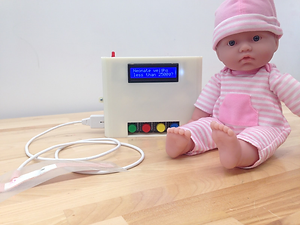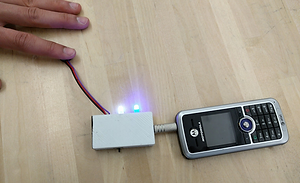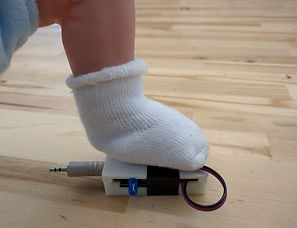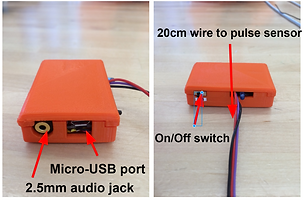NeoSED: Neonatal Sepsis Early Detection System
NeoSED Team: Paola Donis, Joe Hakim, Daniel Huang, Gabriela Rodal, Tam Thanitcul, Yuan Hao Wong, Justin Yan, Yu Zhang
Advisors: Dr. Robert Allen, Dr. Elizabeth Crisofalo, Dr. Soumyadipta Acharya, Dr. Eric McCollum, Dr. Alain Labrique, Dr. Sridevi Sarma,
Dr. Nicholas Durr, Dr. Richard Hamilton
Team News
Milestones
-
First conceptualization of a home-based system that assimilates patient history information and vital signs (Sepbox) (November 30th 2015)
-
First successful iteration of SepScore (December 6th, 2015)
-
First automated text message of heart rate - Successful incorporation of phone communication in physical device. (February 20th, 2016)
-
First wearable device with necessary features (pulse sensor, microcontroller, text messaging function) (March 15th, 2016)
-
In-situ processing achieved with Huuzah-esp8266 microcontroller (April 8th, 2016)
-
Verification testing completed - “Accuracy of pulse sensor against commercial Pulse Oximeter” (April 20th, 2016)
Obstacles
-
Lack of neonatal data for the development of the algorithm; an IRB is in preperation to collect neonatal data from the Johns Hopkins Hospital
Awards
-
NeoSED presented as 1 of the 10 finalists in the Bay Area Global Health Innovation Challenge in Berkeley. (April 8-9, 2016)
-
NeoSED was a finalist at the Johns Hopkins Business Plan Competition in the Global Health Category. (April 1st, 2016)

Fig 1: First SepBox prototype (November 2015)

Fig 2: Mobile phone incorporated into prototype



Fig 3: Sock incorporation. The device is being worn by our neonate, Elton (not a real neonate).

Fig 4: Current prototype design. See Solution page for details